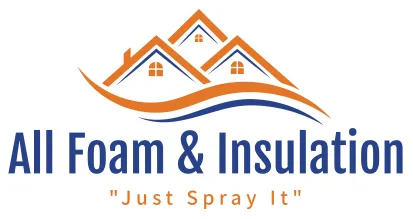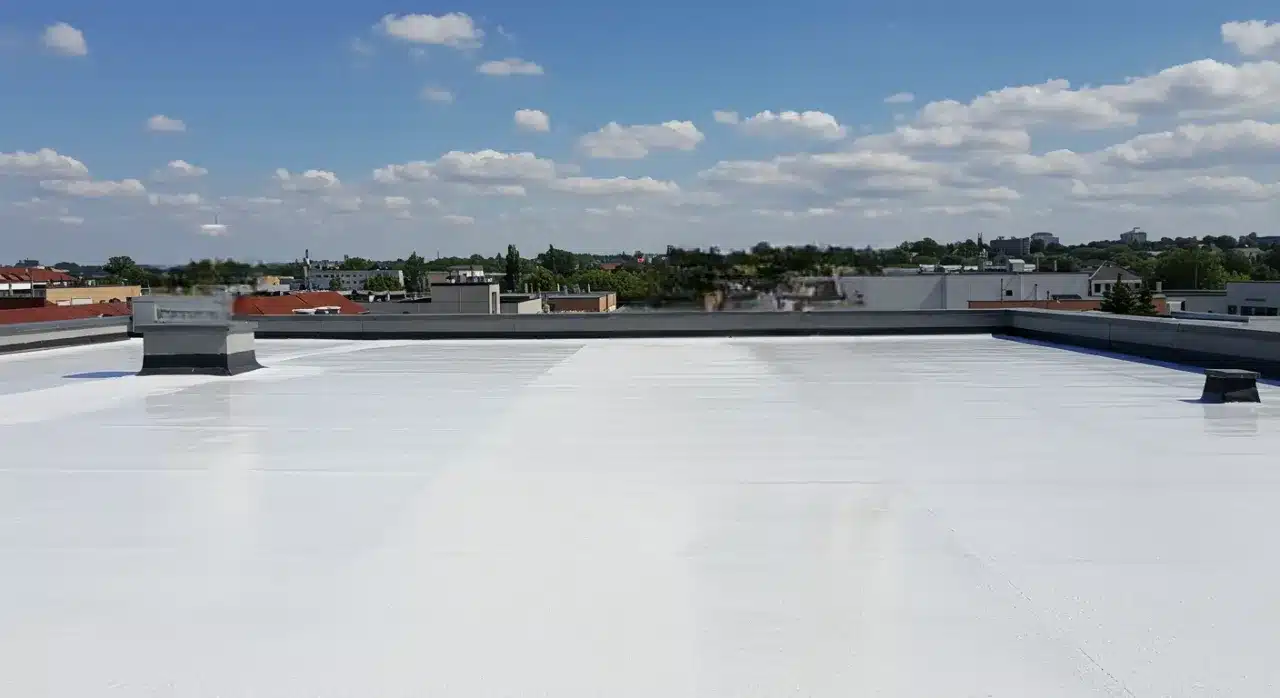Energy efficiency is a growing concern for homeowners, business owners, and construction professionals. With rising energy costs and increasing environmental awareness, selecting the right insulation and roofing solutions can make a significant impact. Membrane roofing, combined with effective insulation options like closed-cell spray foam, open-cell spray foam, fibreglass batt, and blown-in insulation, offers practical solutions for energy savings. This guide outlines expert advice from All Foam & Insulation, LLC to help you make informed decisions and achieve long-term energy efficiency for your property.
Understanding Membrane Roofing for Energy Efficiency
Membrane roofing systems are flat or low-slope roofing solutions designed for durability, weather resistance, and energy efficiency. They are commonly made from materials such as EPDM, TPO, and PVC, which provide excellent waterproofing and thermal performance. These materials create a seamless barrier that protects against leaks and weather extremes, ensuring your property remains well-insulated and comfortable. Their versatility makes them suitable for various applications, including residential, commercial, and industrial settings.
Choosing membrane roofing offers several advantages. Its durability ensures long-lasting protection against UV rays, fluctuating weather conditions, and potential water damage. Additionally, the energy-efficient design reduces heat absorption, keeping interiors cooler during the summer and lowering HVAC costs. Membrane roofing’s low maintenance requirements and eco-friendly composition—often recyclable make it a sustainable choice for property owners seeking long-term value.
Categories of Insulation for Enhanced Energy Savings
Pairing membrane roofing with the right insulation boosts energy efficiency and comfort. Closed-cell spray foam is one such option, known for its dense structure and excellent thermal resistance. It acts as a powerful barrier against air and moisture, making it ideal for walls, roofs, and attics. This high-performance insulation helps reduce energy costs by preventing heat transfer and maintaining consistent indoor temperatures. Its ability to strengthen structural integrity adds to its appeal for both residential and commercial projects.
Open-cell spray foam offers another effective solution. Lighter and less dense than closed-cell foam, it expands to fill gaps, providing comprehensive insulation coverage. This feature not only improves thermal performance but also enhances soundproofing, creating a quieter indoor environment. Open-cell spray foam is a more affordable option, making it an attractive choice for budget-conscious property owners without compromising on quality.
Fiberglass batt insulation is a cost-effective and widely available option. Manufactured as pre-cut panels, it is easy to install and provides reliable thermal performance. Ideal for insulating walls, floors, and ceilings, fiberglass batt insulation is a versatile choice for new construction and retrofit projects. Meanwhile, blown-in insulation—composed of loose-fill materials like cellulose or fiberglass—is perfect for filling irregular spaces and attics. Applied using specialized equipment, it creates a seamless insulation layer that enhances energy efficiency and reduces utility bills.
Tips for Energy Savings with Membrane Roofing
Opting for reflective membrane materials, such as TPO or PVC, is one of the simplest ways to maximize energy savings. These light-colored membranes minimize heat absorption, keeping your property cooler during the summer months. This reflective quality reduces the workload on your HVAC system, leading to significant energy savings over time. Selecting a roofing contractor who uses high-quality reflective materials is crucial to achieving optimal results.
Proper insulation is another critical factor. Combining membrane roofing with closed-cell spray foam provides superior thermal resistance and moisture control, while fibreglass batt and blown-in insulation offer more budget-friendly alternatives. The key is ensuring that the insulation complements the roofing system, forming a unified barrier against heat loss and air infiltration. For instance, closed-cell spray foam works particularly well in areas prone to moisture, preventing mold and mildew growth.
Sealing and protecting your membrane roof is essential for maintaining its energy efficiency. During installation, all seams and edges should be meticulously sealed to prevent air and water leaks. A well-sealed roof not only reduces energy waste but also extends the lifespan of the system. Additionally, regular maintenance—including inspections and prompt repairs—ensures your membrane roofing continues to perform effectively, protecting your investment for years to come.
Benefits of Combining Insulation and Membrane Roofing
Combining high-quality insulation with membrane roofing yields numerous benefits. One major advantage is the reduction in energy bills. Properly insulated and sealed roofs maintain consistent indoor temperatures, minimizing the need for constant heating or cooling. This results in noticeable savings on utility costs, especially during extreme weather conditions.
Another benefit is enhanced comfort. Insulation prevents drafts and helps maintain balanced humidity levels, ensuring a more comfortable indoor environment year-round. This is particularly valuable for properties in regions with fluctuating climates, where temperature swings can be a common challenge. Additionally, energy-efficient upgrades like these increase property value. Buyers and tenants are often willing to pay a premium for homes and businesses that offer reduced energy costs and eco-friendly features.
Environmental impact is another important consideration. By reducing energy consumption, you lower your property’s carbon footprint, contributing to a greener future. Membrane roofing and insulation work together to create sustainable solutions that benefit both the environment and your bottom line. These systems not only save energy but also promote responsible resource use, aligning with the values of eco-conscious property owners.
Why Choose All Foam & Insulation, LLC?
At All Foam & Insulation, LLC, we pride ourselves on delivering high-quality insulation and roofing solutions that meet the specific needs of our clients. Serving Medford, Ashland, Central Point, Eagle Point, Grants Pass, Roseburg, and White City, Oregon, we bring years of experience to every project. Our team specializes in spray foam insulation and membrane roofing installations, ensuring that each job is completed with precision and professionalism.
We offer customized solutions designed to align with your energy efficiency goals and budget. Whether you’re insulating a new construction, retrofitting an existing building, or upgrading to a membrane roofing system, our experts provide guidance every step of the way. Reliable service is at the heart of what we do, and we are committed to delivering results that exceed your expectations. When you choose us, you can trust that your property will be insulated and protected to the highest standards.
Start Saving Energy Today
Take control of your energy costs with expert insulation and membrane roofing solutions from All Foam & Insulation, LLC. Contact us today for a consultation and learn how we can enhance your property’s efficiency.
- Phone: (541) 826-9600
- Email: [email protected]
- Website: [email protected]
Frequently Asked Questions
How long does membrane roofing last?
Membrane roofing systems typically last 20–30 years with proper maintenance.
Is closed-cell spray foam worth the investment?
Yes, it provides excellent insulation, reduces energy costs, and adds structural strength.
Can blown-in insulation be added to existing walls?
Yes, blown-in insulation is ideal for retrofitting existing walls and attics.
What is the best insulation for a pole building?
Closed-cell spray foam is recommended for pole buildings due to its durability and superior thermal resistance.



